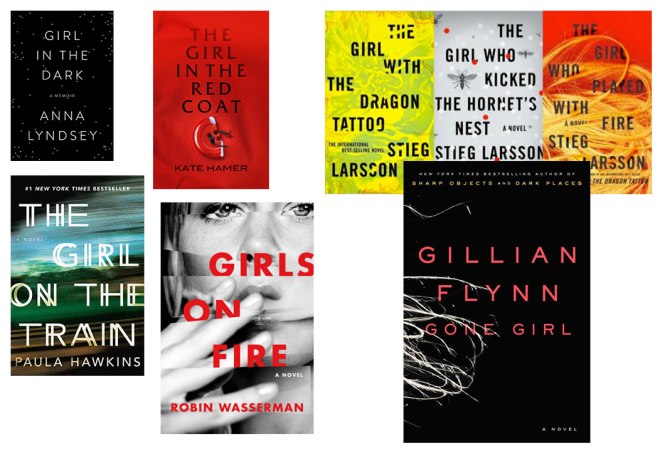What’s in a name? Have you ever gone through a bookstore or perused the many book titles on Amazon and thought to yourself, “Who came up with this title? Better yet, who came up with this cover? I’ve read this book and it has nothing to do with ball gowns or staircases!”
From a purely creative standpoint, the publishing process of choosing a name and cover for a book all boils down to one very important concept that has ramifications for you, as a writer trying to get published: the marketing and sales department has final say on the title of your book and your cover. How do they have final say? They bring a wealth of knowledge from publishing previous titles (both successful and flops), combine it with market research about what’s already out there and what’s selling well, and use all of that knowledge to figure out how they can emulate that success but keep it just different enough not to be the same as something already out there. Has anyone else noticed that the word “Girl” has shown up in a whole lot of places? Girl With the Dragon Tattoo, The Girl on the Train, Gone Girl, Girl in the Dark, Good Girl, Girls on Fire, The Girl in the Red Coat (do you notice a pattern here?). That is no coincidence.
Long story short, you as the writer will not have any real control over these two visual parts of your story should you publish with a big-name publisher.
After you’ve finished despairing, let’s talk about what this means for you as a writer. This blog is specifically for those of you who are trying to transition your writing to that next level. If you’re not interested in publishing with a major publisher, that is okay. This lesson still applies to you because the “publishing mania” can create some destructive habits that all writers suffer from and can become paralyzed by.
Slow down there, space cadet. Let’s get real about some of these questions before you go off and spend hours tweaking your masterpiece so that the publisher cannot miss the way you have made sure your pages break in just the right spots.
First of all, get your story written. The number one problem all writers have is actually finishing a manuscript. No frills, no pretty fonts, no sizing tweaks or margin adjustments. Just. Sit. Down. And. Finish. The. Story.
Now that that’s out of the way, once you have finished your story, keep this in mind:
As little formatting as possible.
If and when you submit your story anywhere, whether to a literary agent, an editor, a magazine, Kindle to make your own ebook, self publishing, or even your blog, simple formatting is best. An editor may very well reject your manuscript because the formatting is too crazy. It does not look clean and professional. Most editors and lit agents now read manuscripts on a screen and, just like caps lock reads as someone shouting in your head, too much formatting looks like a neon sign describing how amateur you are. Go minimalist. Italics should be the height of your partying. Pretty much never bold anything. Times New Roman (or something sans-serif, you can look it up on Google if you’re not sure), 12 point font, double-spaced, 1 inch margins all the way around, italics for dream sequences/flashbacks/anything not in your normal narrative (or put in a note that simply says “Dream sequence,” like if you are speaking to a typesetter), and bam. Done.
Let your story speak for itself and focus on making it good, not on making the Word document look good (please use Word, we despair whenever we see anything other than Word).
Here’s the deal: formatting a story is an excuse not to finish writing. The tool you use to tell your story, whatever format it is in, must stand alone no matter how it looks. Publishers of all kinds are going to tweak it, pick at it, change it, and generally design it themselves. It will look nothing like your Word file when they are done with it and even if you self publish, the simplest text tends to be the easiest to read (unless you have ebook coding experience like I do or if you hire someone who does).
It is good to come up with a title, even a working title, that you can use to focus your story and refer back to it. For example, I have a story I’m working on that I call the “Spice Shop Story.” If there is a perfect title, definitely use it but be aware that someone may change it. Even if you are self publishing, it is a good idea to run the title by a few people and do some research to see if you are going to be an island unto yourself in a larger marketplace of competing titles and names, or if you are reusing something that has oversatured the market. Publishing’s hard! That’s why it’s so important to write an amazing, gripping story. More on that later in the week.
Also, a quick shout out to all of my new subscribers. Welcome! I hope I can help with any questions you have!
